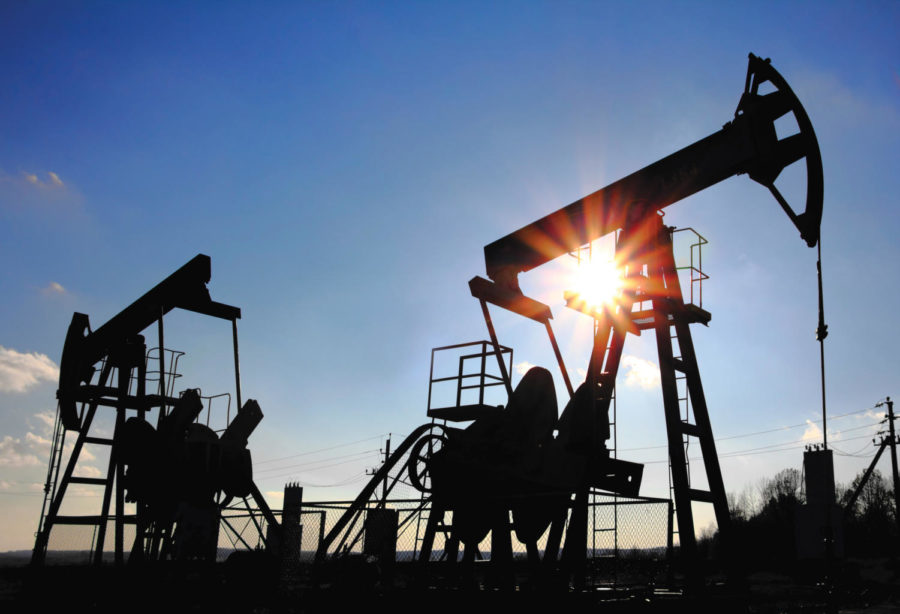Ellingson: Hydraulic fracturing can hurt water quality
Hydrauling fracturing, or “fracking,” is a controversial technique that some fear is contaminating the groundwater.
April 14, 2013
Ever since the development and production of natural resources became an everyday necessity, people have been thinking of new ways to extract all that we can get from the planet. One method of obtaining oil and natural gas — and even geothermal energy — that has been gaining popularity is called hydraulic fracturing, also known simply as “fracking.”
However, the negative impacts on water quality could prove to outweigh the overall benefits of the extraction in the long run.
Hydraulic fracturing is defined as the process of injecting over a million gallons of pressurized water, sand, and chemicals thousands of feet into the ground to break up the rock and release the gas and oil trapped within them. This maximizes the amount of oil and natural gas that can be gathered. A lot of this oil and gas has a poor flow rate because of impermeability of the rock surrounding it and hydraulic fracturing is a way of cracking the rock and improving the flow towards the surface, making obtaining it significantly more effective.
The first two commercial fracturing treatments happened in Oklahoma and Texas on March 17, 1949, by the Halliburton Oil Well Cementing Company. They were successful, and within a year production of these resources increased by 75 percent. Today, it is estimated that approximately 60 percent of all drilling is done by hydraulic fracturing because it’s considerably more efficient than previous methods.
It’s important to look at who the hydraulic fracturing is affecting directly, and to what extent. In many of the areas that are being drilled people are experiencing groundwater contamination and decreased water quantity that is thought to be a result of the nearby hydraulic fracturing. This can especially impact farmers who rely on good water quality and quantity to produce crops or to water their livestock. While precautions are taken with companies to prevent groundwater contamination by putting in steel pipe known as surface casing between the drilling and nearby water sources and by utilizing proper waste water disposal techniques, that might not be enough to fully protect the water.
There are several ways that water can become contaminated, including faulty well construction, spills, and leaks or discharges into surface waters. Water is a necessity for life and nothing can survive without it. Freshwater is already limited in many areas of the world, and contaminated groundwater limits that resource even more. Between 20 and 85 percent of fracturing fluids actually remain in the ground after drilling, which could affect groundwater for several years. Fracturing gels are commonly used in fracking, but even after flushing out the wells some of the gelling agents remain in the ground — which can cause permeability to decrease. This is the opposite result of what hydraulic fracturing is intended for, considering a key part is that it increases rock permeability to allow for a more efficient release of gas and oil.
Since 85 percent of hydraulic fracturing is done in the United States, and we are a wealthier country that doesn’t typically worry so much about clean water availability, a bit less groundwater might not seem as big of a deal. But when you look at water availability at a global scale – only 3 percent of all water on Earth is freshwater, and most of that freshwater is stored in ice caps and glaciers (about 68.6 percent). Approximately 30 percent of our freshwater is from groundwater, and we typically use up more water than can be recharged. This limited resource also has to be shared with over seven billion people (a number that increases every second) and as a population, we really can’t afford to be wasting any water.
Other issues include the overall use of water for hydraulic fracturing, which uses an estimated 70 to 140 billion gallons of water to fracture 35,000 wells every year in the United States. This depletes freshwater and aquatic habitats that depend on it.
While hydraulic fracturing has made a huge impact on industrialization and advancements in the last 64 years, we need to think of ways to further improve these methods that won’t be as damaging to water quality. This is especially true if we hope the planet can sustain the rapidly increasing human population in the future, as well as sustaining plant and animal species that require freshwater.
Caitlin Ellingson is a senior in journalism and mass communication and environmental studies from Milo, Iowa.







